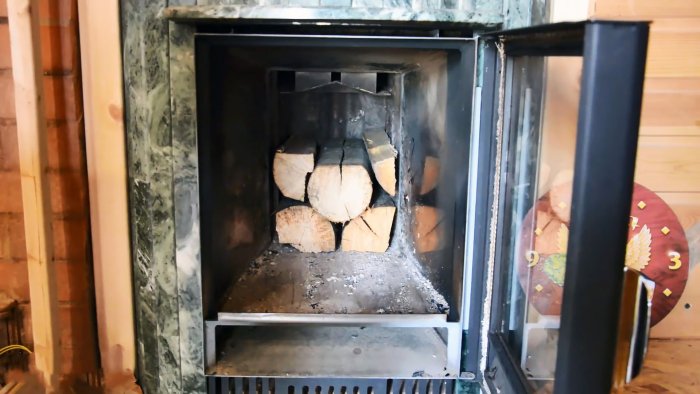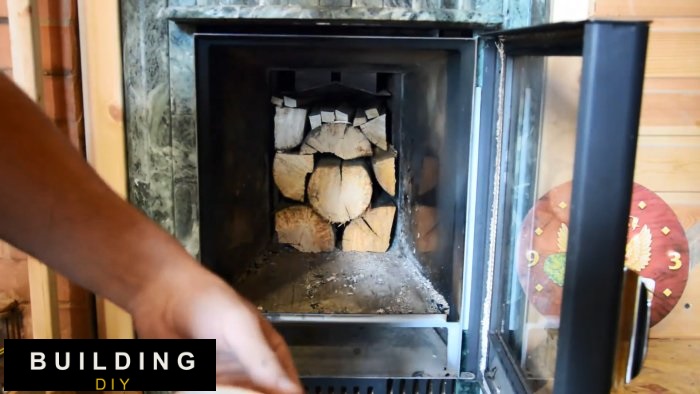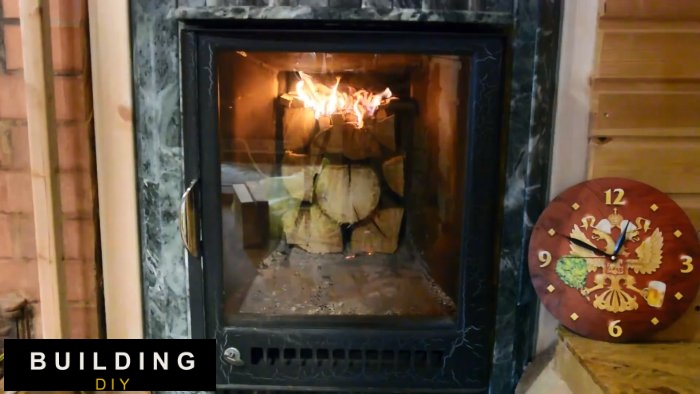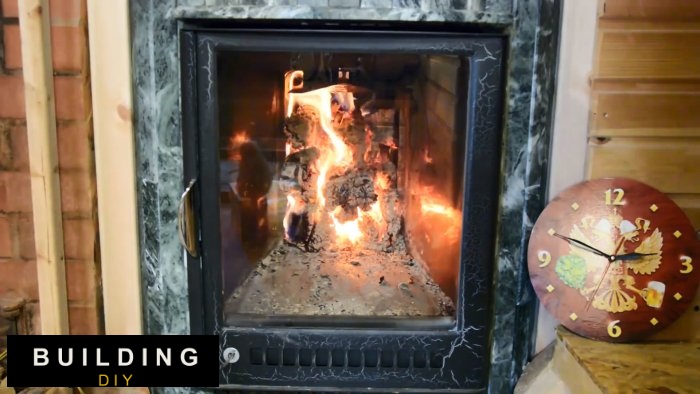The chaotic arrangement of logs in the firebox of the stove and their traditional ignition from below leads to the fact that solid fuel quickly flares up in a short time and a significant part of the generated heat simply goes into the chimney, without bringing any benefit. The consumption of firewood with such an organization of the combustion and ignition process in a wood-burning stove will be unreasonably expensive.
Below we will consider the method of laying logs in a firebox and their rational ignition, in which the firewood will burn slowly from top to bottom and release heat gradually. In this case, irrecoverable heat losses will be insignificant, and the consumption of firewood will be minimal.
How to lay firewood for long burning with maximum heat transfer

One of the main and determining conditions for organizing slow, long-term, efficient, and at the same time economical burning of firewood in a stove is the most dense stacking of logs in the firebox. Moreover, the most massive logs should be placed at the bottom. One of these logs can even be whole, but not too large, otherwise it will not burn, but smolder, which does not provide sufficient heat. After all, in this case, a large volume of flammable gases will not burn but will fly out into the chimney. The smaller the cross-section of the logs, the higher they should be located in the firebox.

We place kindling, consisting of finely chopped wood chips, small firewood, and a small amount of birch bark, on top of the logs. In this case, the fire will spread from top to bottom and this also increases the time for complete burning of the wood fuel.

Two hours from the start of kindling, the firewood almost completely turned into coals, which is also very good, since carbon begins to burn completely. Moreover, as the wood burns down, it is necessary to gradually reduce the amount of air supplied to the firebox. The fact is that coals can burn, unlike firewood, with less air supplied.

It should also be taken into account that during coal combustion, the highest temperature rises in the firebox even though the coals gradually begin to settle. This combustion mode is especially favorable for a sauna stove since at this moment the stones behind the firebox wall are heated to maximum temperature.

This organization of combustion made it possible to extend the fire process almost twice as long as compared to the traditional combustion logs and ignition of fuel from below. Naturally, the amount of firewood will be required in half.



